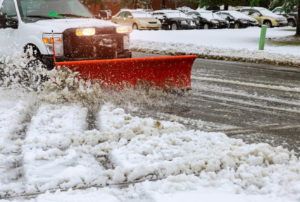01.04.2023
Weather Preparedness
 Now that we’ve entered the winter season, it is snowing, sleeting and even freezing rain in some areas. As the seasons change, eventually it will become sunny and miserably hot in many states. Year after year, these are the weather conditions that we are constantly trying to prepare for in the construction industry. If we do not have a plan in place, injuries tend to occur. So, what is a weather preparedness plan, and what does it entail? The answer is, it depends.
Now that we’ve entered the winter season, it is snowing, sleeting and even freezing rain in some areas. As the seasons change, eventually it will become sunny and miserably hot in many states. Year after year, these are the weather conditions that we are constantly trying to prepare for in the construction industry. If we do not have a plan in place, injuries tend to occur. So, what is a weather preparedness plan, and what does it entail? The answer is, it depends.
At FTI, we have job sites across the entire United States. As we travel from state to state, we take into consideration the local weather trends and plan the best we can for every weather condition that may occur. That is exactly what a weather preparedness plan is: planning for both the expected and unexpected in order to set your team up for success in all possible situations. Most individuals tend to prepare for the obvious conditions like snow, ice, heat and wind when working outdoors. But what about hurricanes, wildfires, tornadoes and floods? Weather and environmental preparedness can also include chemical spills that can affect air quality.
In August 2021, I received a phone call from one of our employees working in California. Wildfires had started to spread into the area of the state where we were working. I could hear the concern in their voice, and I knew it was time to evacuate the area. We were prepared for this to happen as wildfires were picking up throughout the state during the summer, and we were utilizing available resources to monitor them. Because we had been taking the time to monitor these events, we already had the evacuation points identified. Our plan not only included these resources, but also proper contact information to set up our team for safety.
When it comes to creating a weather preparedness plan, there is no one size fits all. Start with your safety resources, such as safety team members or external consultants or agencies. For the greatest chance of success, begin by developing a plan, sharing it with team members and leaders and ensuring you’ve thought through the various types of weather conditions your teams may face. Creating a plan, working it and consistently evaluating it is the best course of action for being and staying prepared.
If you enjoyed this blog article, please subscribe to stay up to date on the latest industry news from our experts at Faith Technologies.




